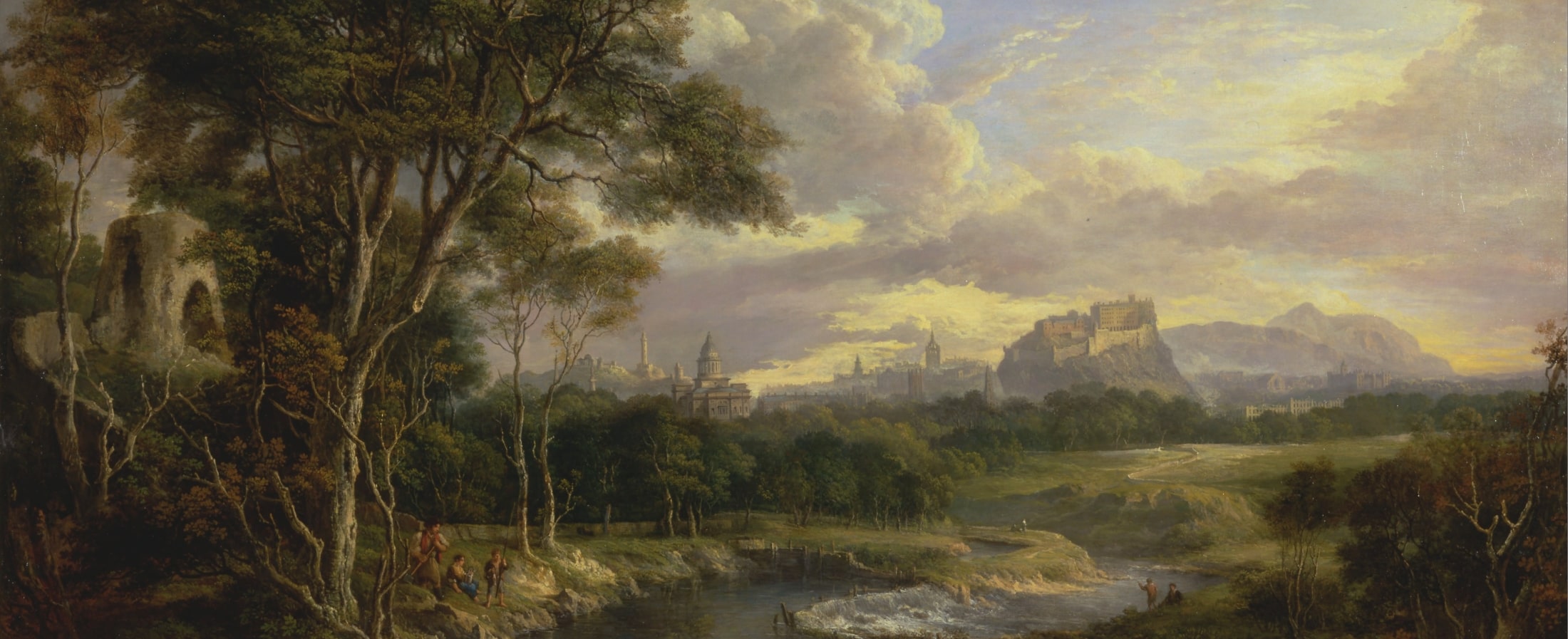
The most famous Romanticism paintings you need to know
Emotions, excitement, expressiveness, and bright colours were all introduced to 19th-century art through Romanticism, often depicted alongside themes of shipwrecks and waves.
Here, we’ll explore how Romanticism, a cultural and artistic movement which emerged in Europe, challenged traditional values in literature, art, and philosophy.
Romanticism's influence on art
The Romantic movement emerged at the end of the 18th century during a time of great societal upheaval, with artists increasingly drawn to explore emotions and individualism in their work. In contrast to the classical ideals of order and reason, Romanticism embraced passion and the expression of new, often rebellious ideals. This artistic movement also celebrated the opposition of wild nature to scientific and technological progress, and the personality of the individual.
10 most famous Romanticism paintings
The heroes depicted in Romanticism paintings are brave and rebellious. They frequently resist the force of nature or power and are depicted in heroic narratives. The artists wanted to evoke strong emotions in viewers, carefully selecting suitable plots, which we will delve into here.
1. ‘The Hay Wain’ by John Constable
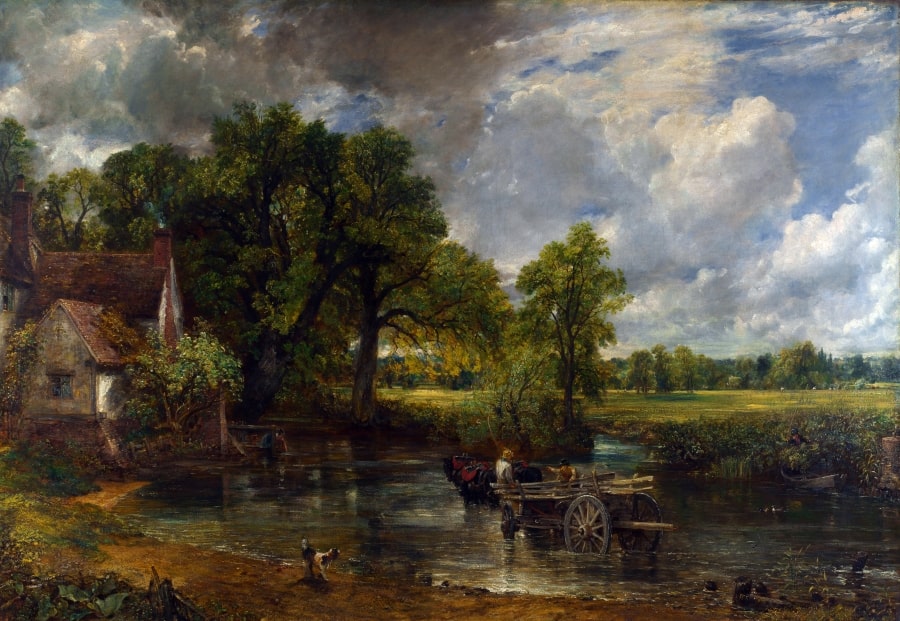 The Hay Wain, John Constable, c. 1821
The Hay Wain, John Constable, c. 1821Nature’s appeal is one of the main features of Romanticism, so there is multitude of Romantic landscapes that praise nature either for being furious and merciless, or beautiful and serene.
English landscape painter John Constable (1776-1837) presented a poetic interpretation of nature in his paintings. In ‘The Hay Wain’ (1821), Constable depicted a rural scene on the River Stour, a border between two English counties: Suffolk on the left side and Essex on the right. The peaceful summer landscape features wide lands with trees and dark clouds that add dramatism, making it a powerful foreground for the peaceful peasant life scene.
Although considered Constable's most famous image, ‘The Hay Wain’ did not sell during its first exhibition at the Royal Academy in 1821. However it received its well-deserved recognition in 1824 when Charles X of France awarded Constable a gold medal and is today considered one of the most famous English Romanticism paintings.
2. ‘The Raft of the Medusa’ by Théodore Géricault
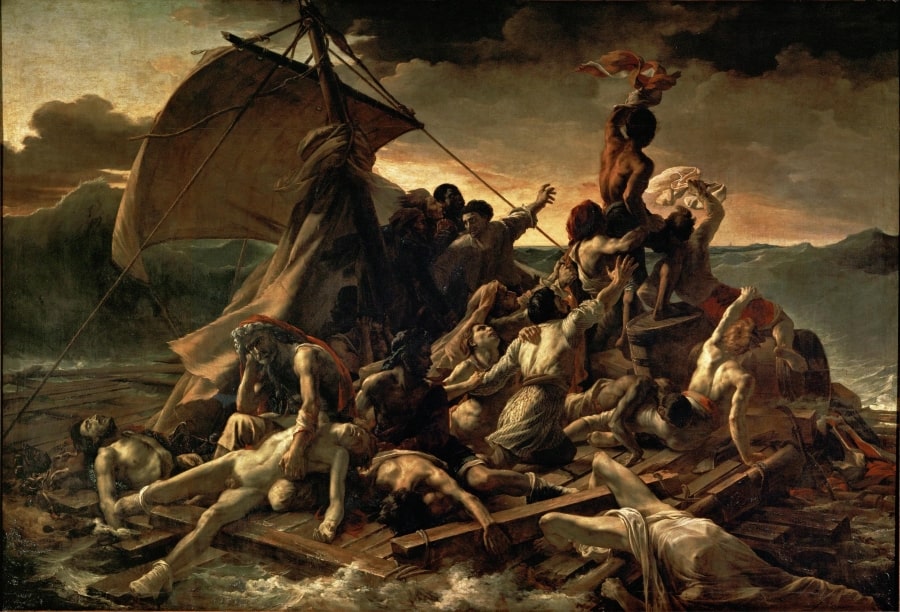 The Raft of the Medusa, Théodore Géricault, c. 1819
The Raft of the Medusa, Théodore Géricault, c. 1819‘The Raft of the Medusa’, created by French painter Théodore Géricault (1971-1824) in 1818-1819, is one of the most famous Romantic paintings. It’s considered the most significant paintings of this period was inspired by the tragic event involving the French naval frigate, Medusa, in July 1816. The frigate crashed near the coast of Senegal due to the captain's lack of competence, leaving 147 people on the raft in the open ocean without water and food. Over the course of 13 harrowing days, people fought for survival and even resorted to cannibalism and murder. Only 13 of the survivors were rescued by the brig Argus.
When displayed at the Paris Salon in 1819, the painting elicited mixed reactions from both the French public and art critics. Some people admired this bold and frank depiction of the real state of affairs in France, while others were horrified by such a terrifying image of survival which was still fresh in the minds of French people.
3. ‘Wanderer above the Sea of Fog’ by Caspar David Friedrich
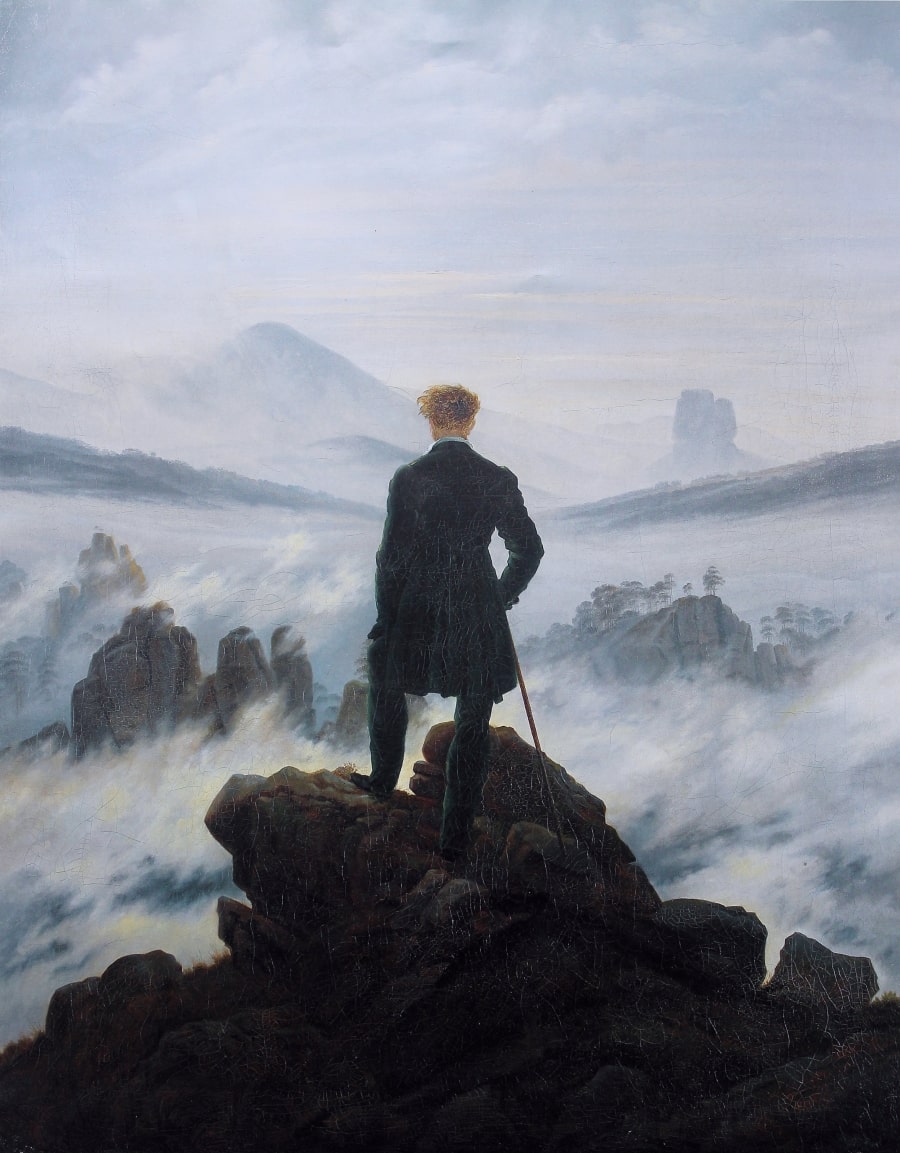 Wanderer above the Sea of Fog, Caspar David Friedrich, c. 1817
Wanderer above the Sea of Fog, Caspar David Friedrich, c. 1817The painting ‘Wanderer above the Sea of Fog’ (1817-1818) by German artist Caspar David Friedrich (1774-1840) is a quintessential work of Romanticism, encapsulating the movement’s main principles. The painting depicts a lonely man standing at the edge of a cliff gazing out at the boundless and untamed natural world. The depiction of irrational wild nature in opposition to the human being is a common trope of Romantic art.
Friedrich used a special compositional motif called Rückenfigur, which portrays the figure seen from behind. This technique, along with the uncertainty of the figure’s identity, allows viewers to identify with the depicted character and feel immersed in the painting. Some scholars interpret this painting as a self-portrait of Friedrich, imbuing it with a sense of self-reflection that was so common in the Romantic period.
4. ‘The Kiss’ by Francesco Hayez
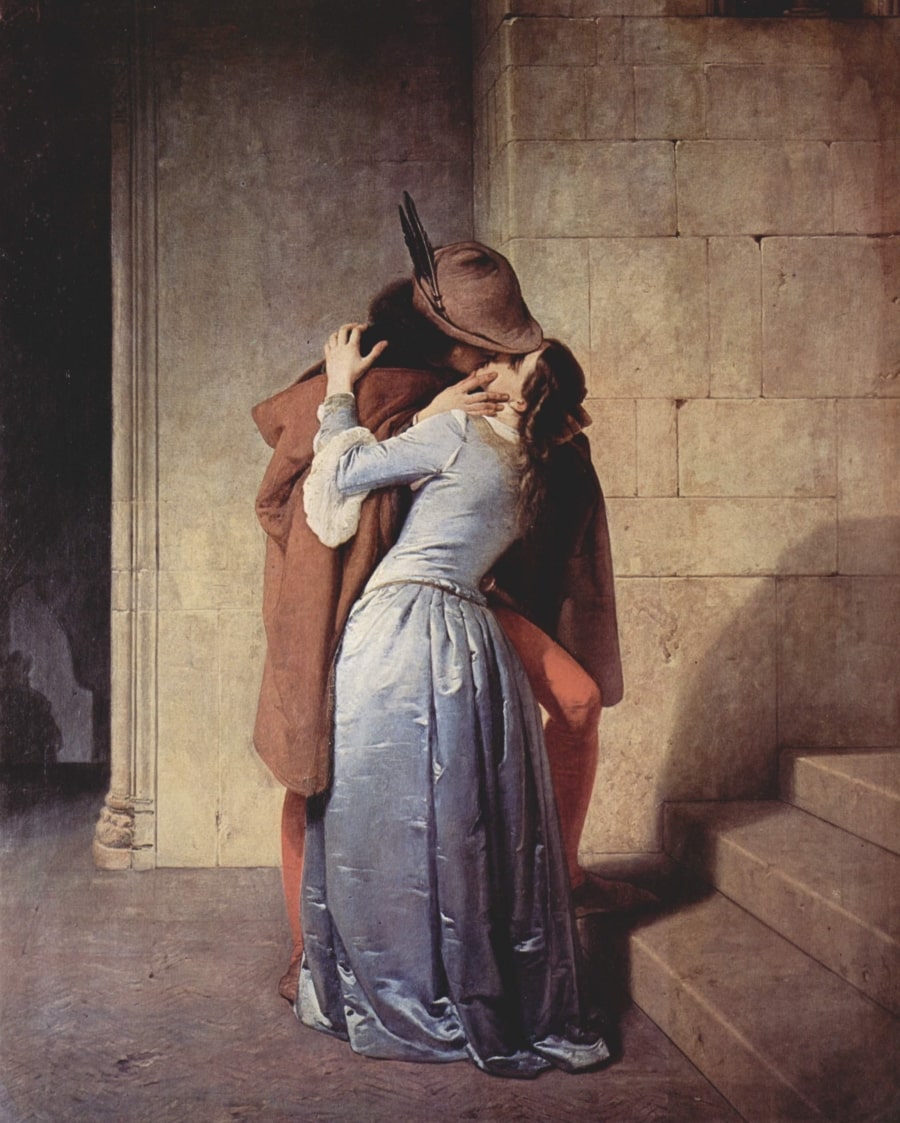 The Kiss, Francesco Hayez, c. 1859
The Kiss, Francesco Hayez, c. 1859Italian artist Francesco Hayez (1791-1882) was one of the leading artists of Italian Romanticism. He considred ‘The Kiss’ as one of his best and most significant paintings. It depicts the main features of Italian romanticism such as naturalism and attention to the sensual manifestation of love. In addition, it alludes to the crucial historical event of the Italian people's national liberation movement against foreign dominance.
Although the architecture and the figures’ clothes are reminiscent of the Medieval Ages, the depiction of the kiss goes beyond the traditional iconography of that era. The patriotic spirit of the painting also gives it a contemporary feel. The kissing pair symbolise the nascent Italian nation and the kiss not only represents their love for each other but also their love for their homeland.
5. ‘Liberty Leading the People” by Eugène Delacroix
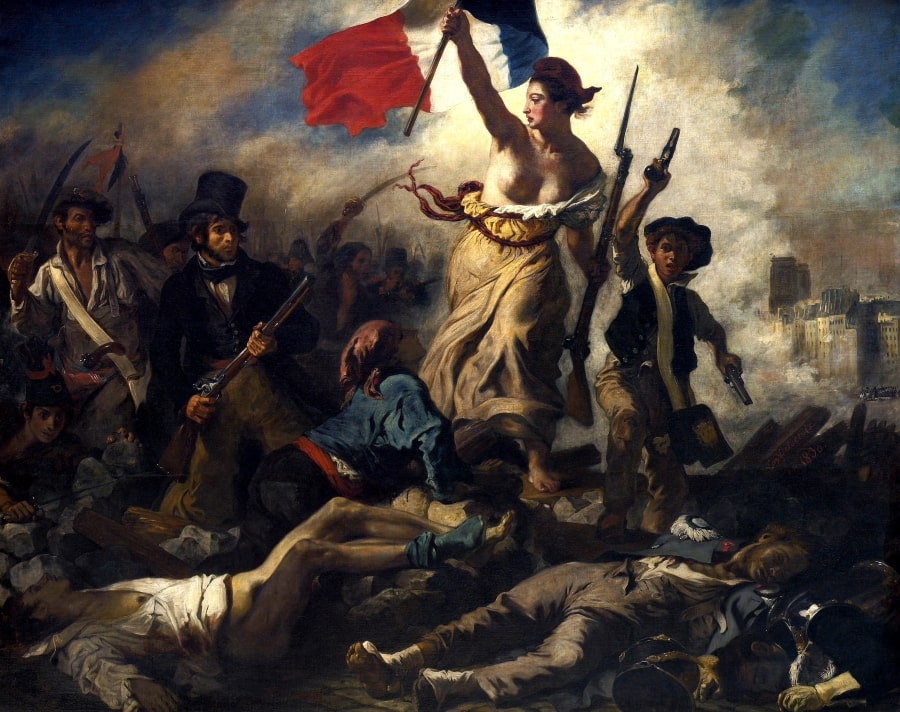 Liberty Leading the People, Eugène Delacroix, c. 1830
Liberty Leading the People, Eugène Delacroix, c. 1830French artist Eugène Delacroix (1798-1863) created 'Liberty Leading the People' in the autumn of 1830, immediately following the July Revolution, which marked the end of the reign of Charles X and the Bourbon restoration regime. Delacroix did not participate in the revolution, but in a letter to his brother, he expressed his commitment to painting for his homeland if he couldn't fight for it.
At the heart of the painting is Marianne, a woman who symbolises the French Republic and embodies its values of liberty, equality, and fraternity. She is also sometimes depicted as the Goddess of Liberty. With a rifle in her left hand and the national flag of France in her right hand, Marianne, wearing the Phrygian cap as a symbol of freedom, leads the way barefoot and bare-chested, fearlessly guiding her people towards the future.
6. ‘The Ninth Wave’ by Ivan Aivazovsky
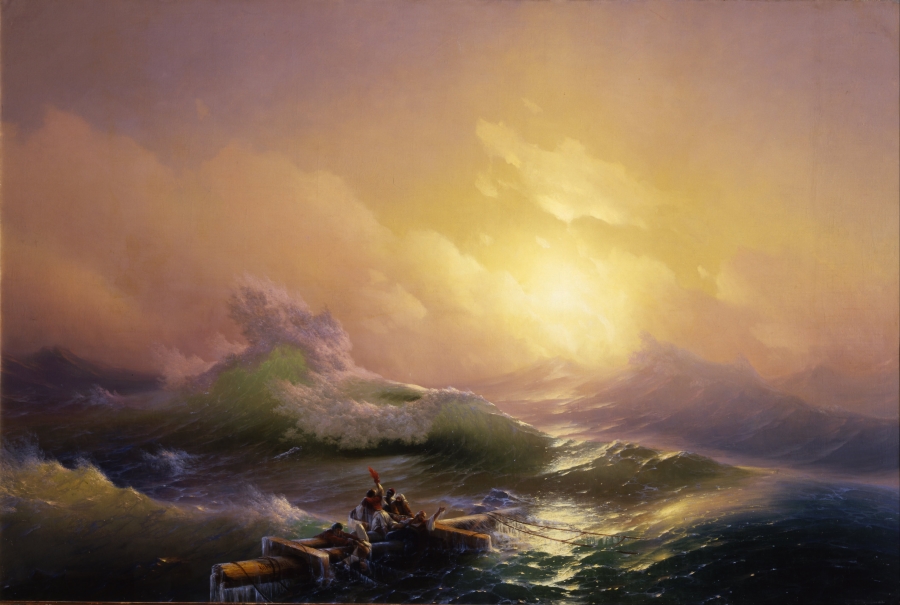 The Ninth Wave, Ivan Aivazovsky, c. 1850
The Ninth Wave, Ivan Aivazovsky, c. 1850Armenian-Russian painter Ivan Aivazovsky (1817-1900) was one of the greatest painters of marine art, having had first-hand experience of what it felt like to be caught in a stormy sea. Once, during one of his first adventures From England to Spain, he was caught in a terrible storm in the Bay of Biscay. To survive the storm, the captain even ordered the masts to be cut down.
This experience likely served as inspiration for ‘The Ninth Wave’ (1850). In this painting, Aivazovsky created the most powerful Romantic image of a storm. The painting's large size creates the effect of the viewer's presence in the midst of the raging nature. Despite the hopeless condition of the people clinging to a piece of a broken mast, there is still some hope for salvation. The sun rising from the horizon transforms this terrifying night into a fascinating sight that evokes both horror and admiration.
7. ‘The Third of May 1808’ by Francisco Goya
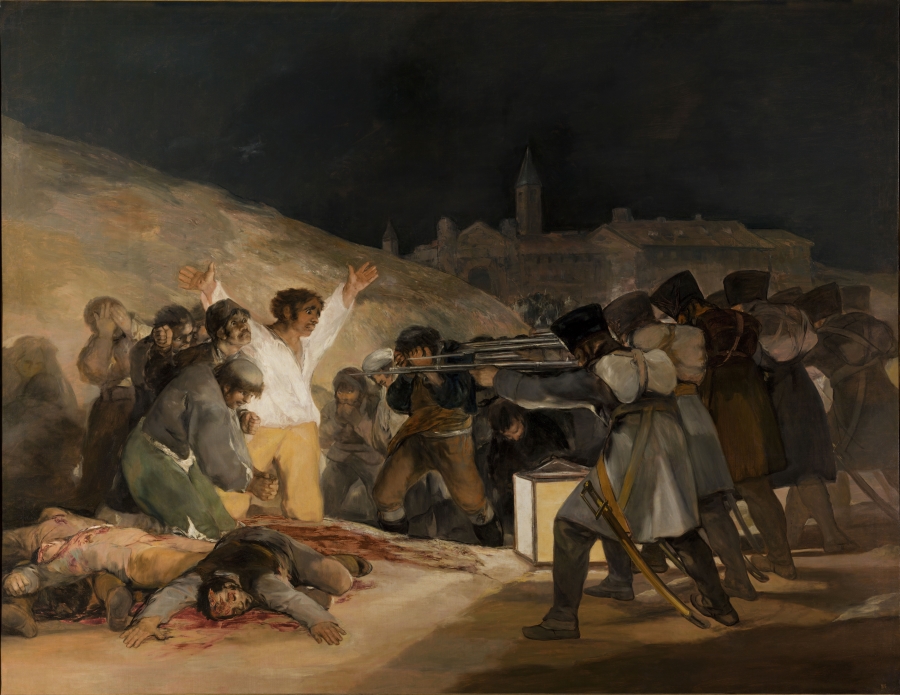 The Third of May 1808, Francisco Goya, c. 1814
The Third of May 1808, Francisco Goya, c. 1814In the painting ‘The Third of May 1808’ (1814) Spanish artist Francisco Goya (1746-1828) depicted the beginning of the liberation struggle of the Spaniards against the French also known as the Second of May Uprising. This is a scene of the execution of Spanish rebels by the occupying French military, which took place on the night of the third of May.
The painting portrays the horror of war, with Spanish rebels and French soldiers depicted as opposing forces. The poses and gestures of the Spaniards are carefully rendered, conveying fear, anger, and patriotism, while the French soldiers are depicted as a faceless, uniform mass. It emphasises the heroism of the Spanish rebels who stood up against Napoleon Bonaparte.
8. ‘The Nightmare’ by Henry Fuseli
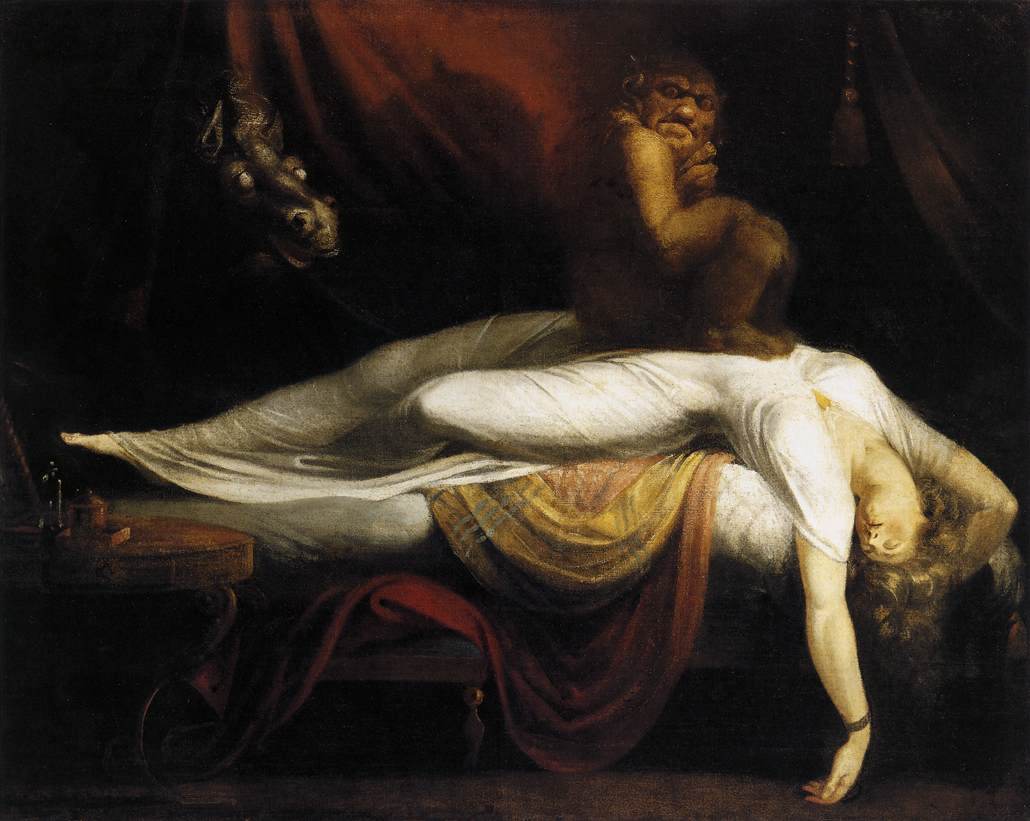 The Nightmare, Henry Fuseli, c. 1781
The Nightmare, Henry Fuseli, c. 1781Swiss painter Henry Fuseli (1741-1825) often depicted dark supernatural subjects in his paintings and even created a series of paintings about nightmares. In ‘The Nightmare’ (1781) Fuseli depicted a woman in a deep sleep and two demons approaching her for her soul. One of them is an ape-like incubus sitting on her chest and the other is a horse-headed demon. Fuseli depicted the woman with an disproportionally long body to emphasise the whole weight of the incubus crouched on her chest. Both demons look directly at the viewer.
This painting is thought to have been inspired by legends about ghosts and stories about sleep paralysis. Fuseli influenced many Romantic painters such as William Blake and this painting continues to inspire many films about demons and vampires.
9. ‘The Fighting Temeraire, tugged to her last berth to be broken up, 1838’ by William Turner
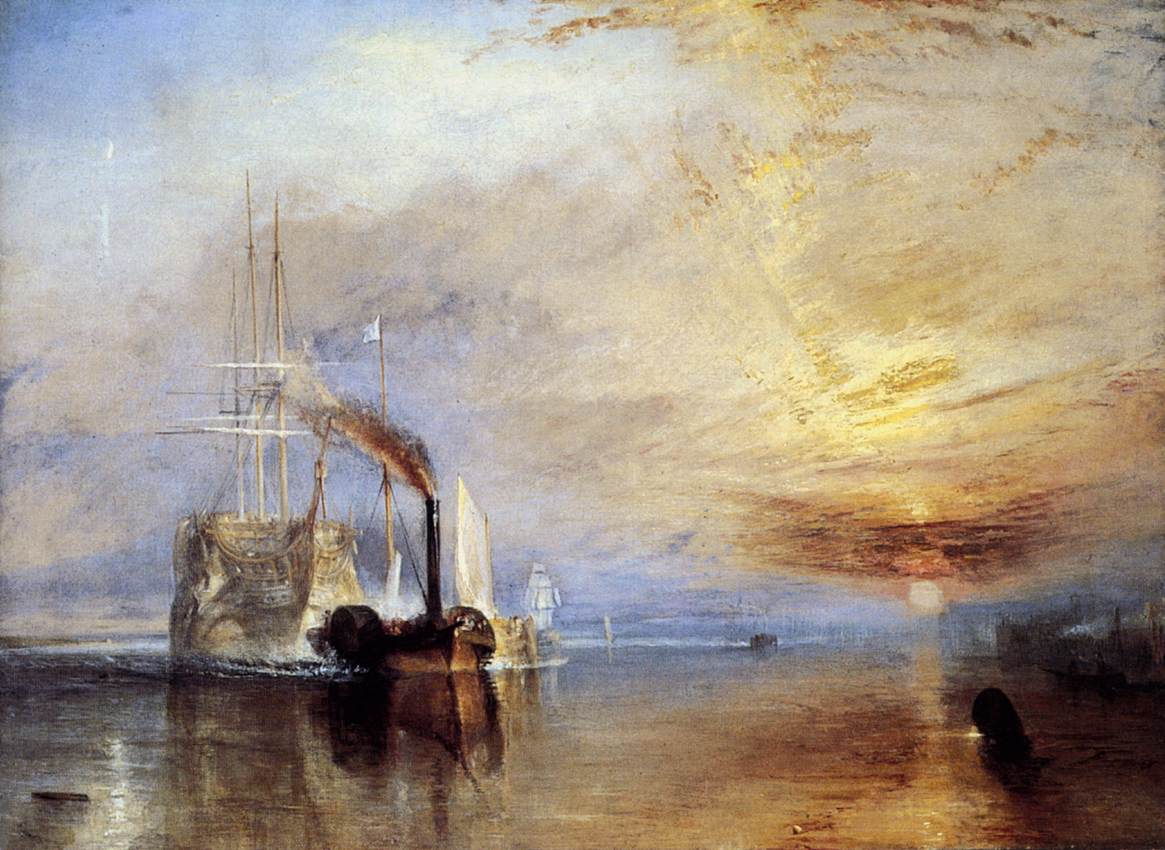 The Fighting Temeraire, tugged to her last berth to be broken up, 1838, William Turner, c. 1838-1839
The Fighting Temeraire, tugged to her last berth to be broken up, 1838, William Turner, c. 1838-1839In this work, English painter William Turner (1775-1851) depicted the 98-gun second-rate ship of the line of the United Kingdom’s Royal Navy, which participated in the Battle of Trafalgar. After this, the Temeraire was towed to the shipyard in Rotherhithe to be broken up and buried in the graveyard of ships. Nevertheless, the subject of the painting pays tribute to the heroic past of this ship.
When this painting was presented at the Royal Academy in 1839, the public was not sure whether Turner depicted this scene during a sunrise or a sunset. Although it is obvious that Turner only could make this scene appear in the evening to show the sunset of this ship and the passing of the era of sailing vessels. On the left side near the frigate, a sickle of the new moon can be seen as a sign of the new epoch of steam vessels.
10. 'Newton’ by William Blake
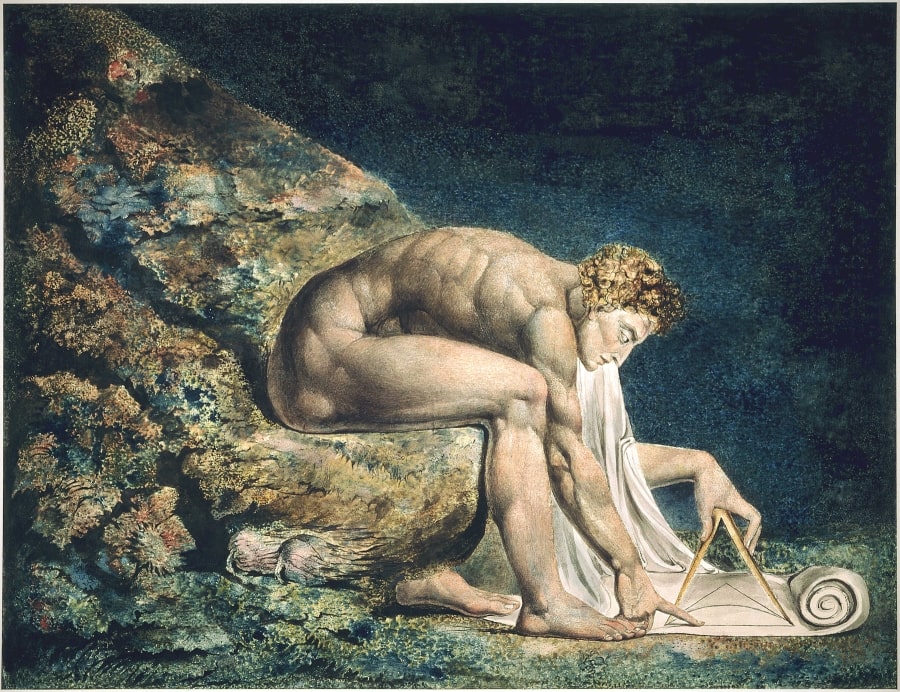 Newton, William Blake, c. 1804-1805
Newton, William Blake, c. 1804-1805English poet and painter William Blake (1757-1827) completed the final version of the monotype ‘Newton’ in 1805. Throughout his life, Blake was convinced that art is a tree of life while science is a tree of death. As a real romantic artist, he disliked Newton's theory of optics which divided what can a person see with a ‘vegetative eye’ and spiritual vision.
This monotype is a satirical depiction of Newton. An idealistic version of the scientist is sitting on a rock covered with algae. He is drawing a diagram with a compass but in fact, he merely follows the rules of the instrument as if he cannot unite his vegetative and spiritual vision and finish the construction.
Romanticism: Evoking powerful emotions
Romanticism departed from the strict and rational art of the Enlightenment, replaced by depictions of heroism, storms of irrational emotions, an appeal to spiritual experiences, and the beauty of wild nature. These works aim to evoke emotions in viewers, leaving them anything but indifferent to the subjects depicted. Romanticism is about feeling, and all these paintings invite us into a world of heroes and bravery.
As an Art de Vivre subscriber, make sure you also read about five famous muses that inspired some of history’s greatest masterpieces.
Credits for the Main photo: View of the City of Edinburgh, Alexander Nasmyth, c. 1822
Photo Credits: Wikimedia Commons
